Any honest online marketer will tell you that email marketing is still the cornerstone of an effective campaign and for many reasons. Most notably? Amazing return on investment (ROI).
That’s right, the ROI potential for email marketing is tremendous considering the fact that is costs basically nothing to send the emails. The main expense associated with an email marketing campaign is the time spent creating and managing the campaigns.
Top Goals of an Email Marketing Campaign
- Nurture leads – One of the main goals of an email marketing campaign is to gain leads at one point in the marketing funnel and provide the right information in a relevant and timely manner to create an opportunity for the sales team. If a lead never moves to the next stage or converts, it’s arguably of no value to your business. This is why lead nurturing campaigns can be invaluable to your marketing funnel.
- Autoresponder campaigns – Automated campaigns or autoresponders are types of lead nurturing emails set to automatically send out specific content to users based on actions taken on the site, i.e. welcome email sent to new customer sign up; discount offers sent to users that abandon shopping carts; coupons sent to users on their birthday, etc. Oftentimes lead nurturing campaigns will include a series of emails all with a coherent purpose. The purpose of these campaigns vary but are typically used to advance new leads to the point where they are ready to be contacted by the sales team or convert online.
-
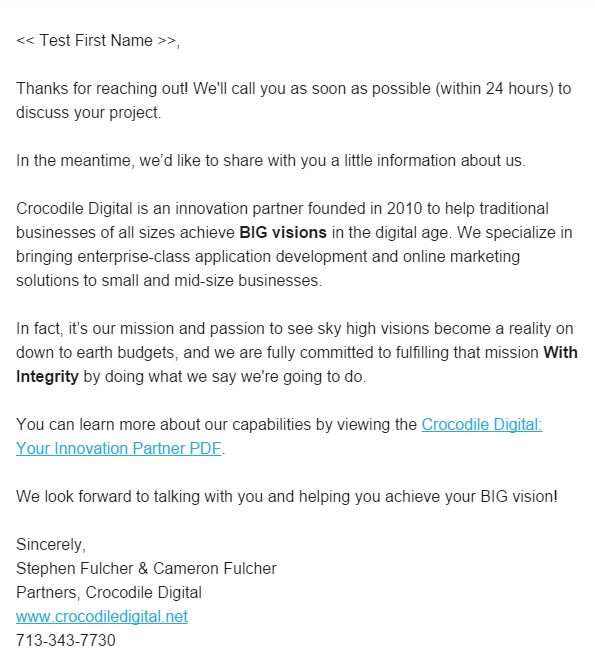
This is a screenshot of a lead nurturing email that is sent out automatically after someone fills out a form on our website or one of the forms on our landing pages. We can also send this out manually after making an offline connection.
- Promote new products and special deals – Email marketing is the perfect way to promote something new and cool you have to offer customers. The goal of this form of marketing is to generate direct sales by converting new leads or to find opportunities among existing customers. It’s effective because it’s a low-cost way to boost sales.
- Promotional email campaigns – These email campaigns typically consist of a stand alone email, but can also be part of a series of emails (drip email marketing). These types of campaigns are generally easy to create and provide a clear call-to-action with a high potential to convert by stressing your current sale or promotion.
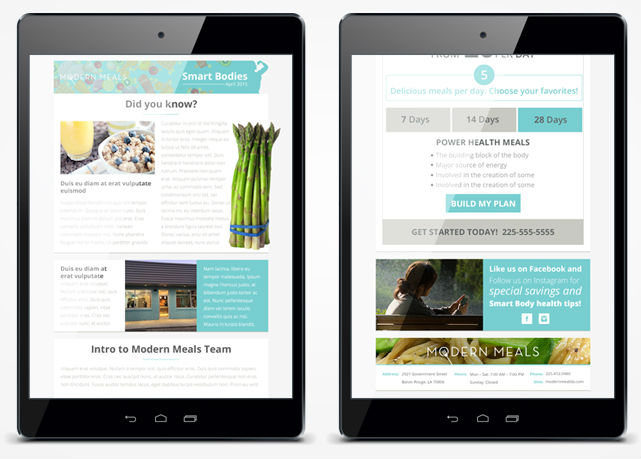
This is a screenshot of a promotional email campaign we developed for a client. See the full solution in our portfolio.
- Build brand loyalty – Email marketing campaigns are a great way to promote engagement among existing customers and get them to purchase in greater volume or more frequently. In campaigns focused on building brand loyalty, you are not selling anything but keeping in touch and promoting your company. In essence, reminding them you are still there.
- Newsletter campaigns – These are used for regular updates about your company and are sent to existing customers. The purpose is to keep customers engaged and distribute soft-sell messaging, which is a less invasive form of marketing. Newsletter campaigns are also a great way to leverage content such as the most recent blog posts from your website.
- Generate online reviews – People are reliant upon customer testimonials for making purchasing decisions, especially these days when they are so easily available online. In fact, many studies have shown that even a small improvement in a company’s online review rating can have a dramatic increase in new customer sales. The challenge is that these reviews don’t write themselves, and even the customers that are satisfied with your product or service are probably not going to leave you a review. An effective way to encourage your customers to leave you a review is by setting up an automated email campaign that directly asks the user to leave a review online and provides super-simple instructions on how to do so. These campaigns are typically sent a certain number of days (or weeks) following a transaction with measurable results that you can manage. For more small business marketing tips on online reputation management, check out our in-depth blog on how to improve your online reputation.
- Transactional emails – These are used for regular updates about your company and are sent to existing customers. The purpose is to keep customers engaged and distribute soft-sell messaging, which is a less invasive form of marketing. Newsletter campaigns are also a great way to leverage content such as the most recent blog posts from your website.
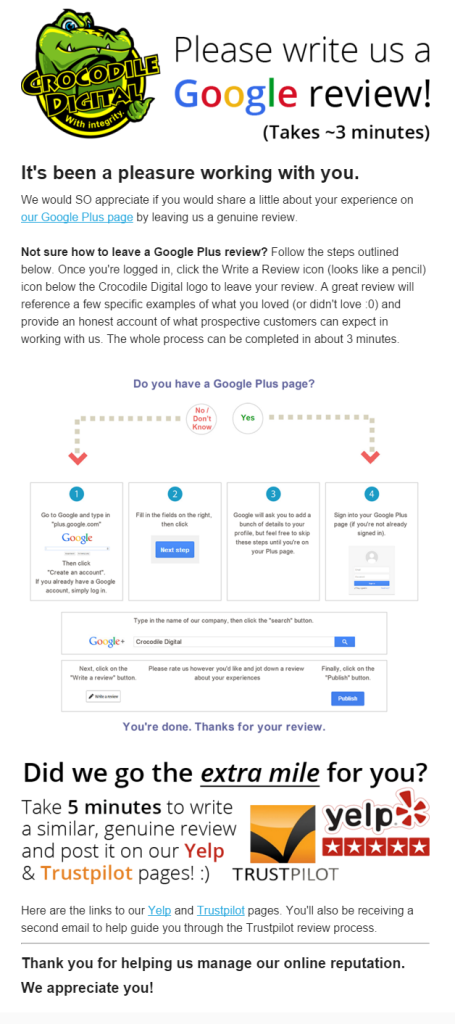
This is our email campaign that is automatically sent to a client after a transaction to encourage them to leave us a review online.
Ingredients of a Successful Email Campaign
- Use attractive images (no stock images!)
- Write copy as if you were talking to one of your friends (conversational style).
- Use a responsive template whenever possible (see below for more information about email marketing platforms).
- Segment your audience and create targeted campaigns for each of those segments. The goal of your campaign should be to send the most relevant content to the right people at the right time in order to move them through your marketing funnel towards purchase.
- Don’t buy email lists and don’t spam your customers or potential customers. No one wants to receive emails they didn’t sign up for and it can end up backfiring on your brand in two ways. 1) It will discourage your customers and potential customers from buying from you. 2) A large percentage of your emails will get marked as spam which could result in your email marketing account being suspended by the provider.
- Just do it! Start your email marketing campaign right away, even if it’s only sent out monthly or quarterly and then refine it over time. It takes time to to build a quality email list, so start now.
How to Build Your Email Marketing List
- Website signup – On our website, we offer a newsletter signup on the homepage and we are running an exit intent campaign that automatically generates a pop-up asking new visitors to sign up for the newsletter before they leave the site.
- Point-of-sale opportunities – Gather customer emails at the point of sale, whether that’s on your website or at the counter. If your business enables online sales, adding new customers to your email lists can be completely automated.
- Leverage your existing customer lists – Import your contacts from your CRM (such as Salesforce) or your email accounts (such as Outlook or Gmail). You can leverage integration with popular CRM products to automatically add new customers and potential customers to your email lists once they are added to the CRM. BE CAREFUL when importing lists. It’s always a good policy to get fresh permission before sending out marketing emails in order to avoid coming across as spam, especially if haven’t interacted with the contacts on your list in over 6 months.
- Social media sign up – Add your signup form to one of the tabs on your Facebook page. Facebook offers integration with many popular email providers like Mailchimp.
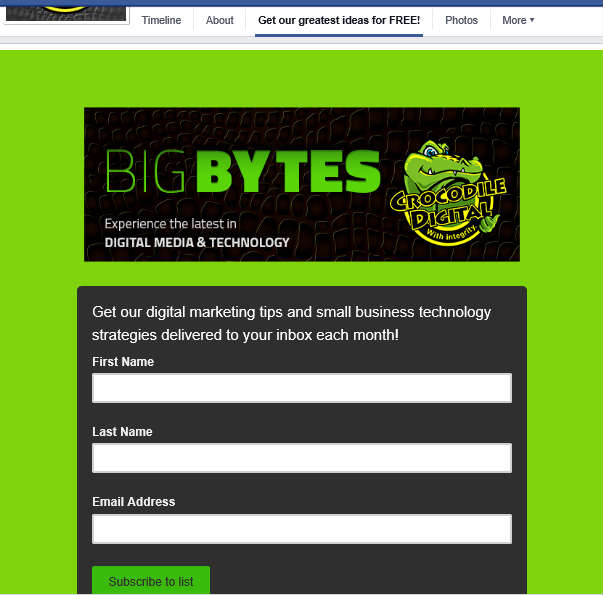
Don’t forget to include a newsletter signup under one of the tabs on your Facebook page, see ours for an example.
- Offline marketing opportunities – Train your sales team to collect emails from leads and prospects to keep them engaged and move them through your marketing and sales funnels.
The Power of Email Marketing Platforms
While there are many effective email marketing platforms available that can be used to launch an email marketing campaign, in this blog we are going to focus on two of the most popular options, MailChimp and Salesforce CRM emailing capabilities. It’s worth noting that Mailchimp is more of a marketing tool, while Salesforce provides mass emailing capabilities for the sales team.
The beauty of both these systems lies in the fact that an average, non-technical business manager can easily build and send a professional email campaign. Once these campaigns are set up initially, they are very low maintenance because your templates are saved and you can easily update the content.
MailChimp
- Under the “Forever Free” plan offered by MailChimp, you are allowed to send up to 12,000 emails a month to a list of up to 2,000 subscribers. That’s impressive.
- Pricing plans are affordable and scalable and can go with paid versions to add as many subscribers as you need.
- Mobile device responsive templates.
- Very easy to use with a large number of pre-built customizable templates.
- Paid plans offer marketing automation, segmentation, targeting, testing, and custom reports.
- Integration with your favorite marketing and sales tools.
Salesforce CRM and Email
- Capable of sending mass email blasts and 1-to-1 emails with saved templates.
- No free version available, only free trial.
- Personalization of email marketing with features for segmentation and autoresponders.
- Options to customize reports according to dates, email types, etc.
- Robust API capabilities and integration plugin.
- Enables effective measurement of your sales campaign and prospect engagement.
Email marketing campaigns make sense for small businesses because they are extremely easy to manage and affordable for the tightest of marketing budgets. In addition, they offer precise targeting capabilities (far beyond their cost!) that enable businesses to get the right message in front of the right person at the right time.
If you’d like to learn more about how your business can grow with email marketing, give us a call! We specialize in helping small businesses market and advertise effectively online, and we’ll help you maximize your budget for optimal sales results. Thank you for reading our blog – come back and see us soon! If you enjoyed this article, please feel free to share it with a friend or on social media.
- Promote new products and special deals – Email marketing is the perfect way to promote something new and cool you have to offer customers. The goal of this form of marketing is to generate direct sales by converting new leads or to find opportunities among existing customers. It’s effective because it’s a low-cost way to boost sales.

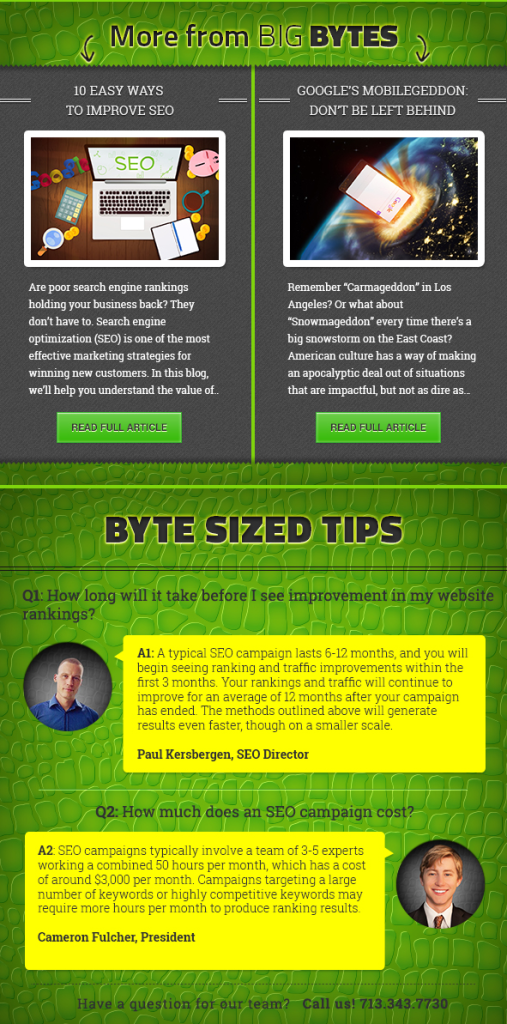
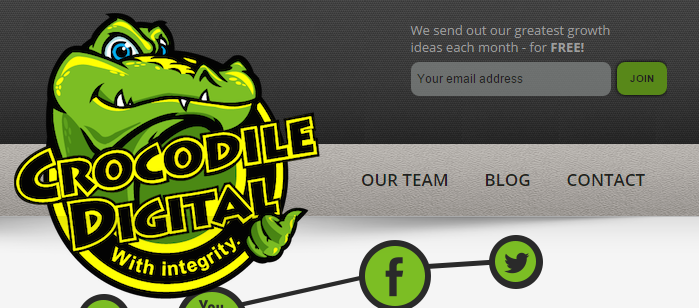
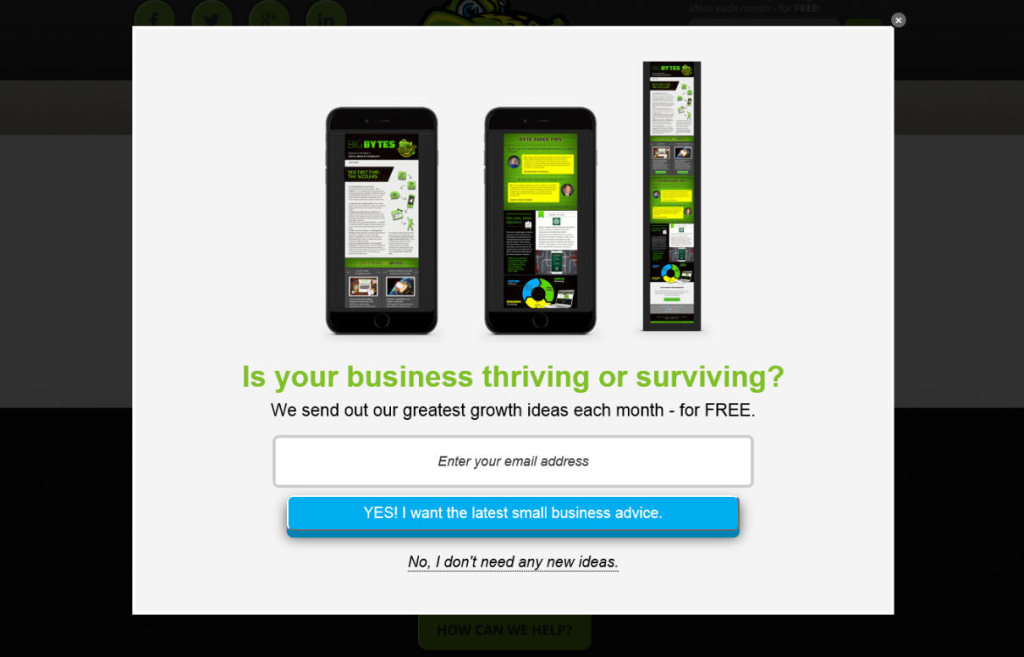
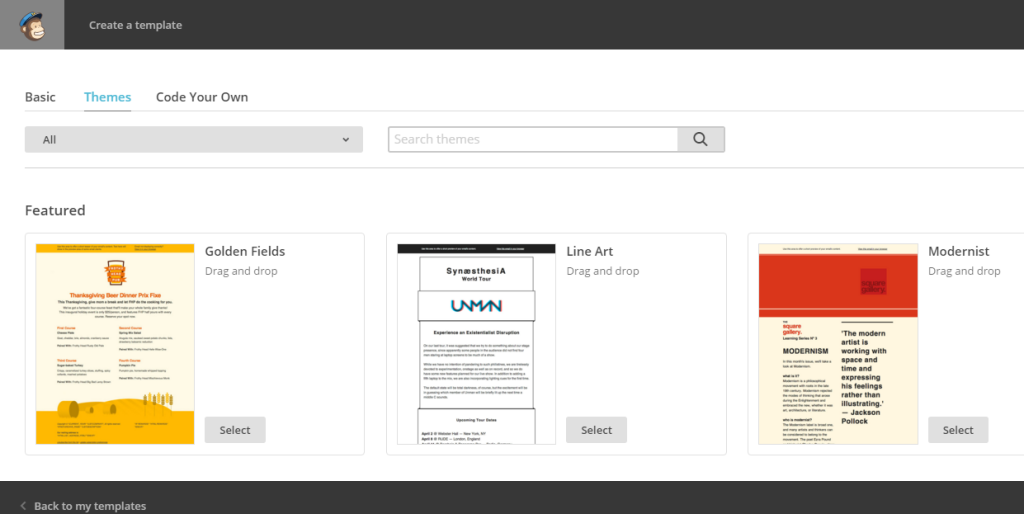
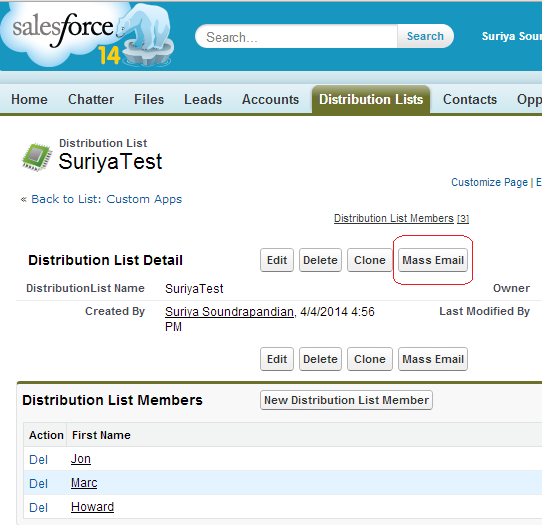
Leave A Comment